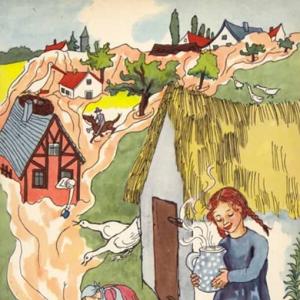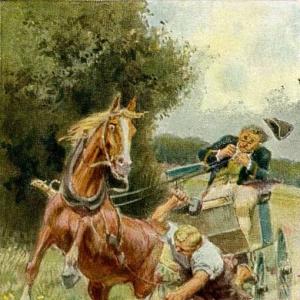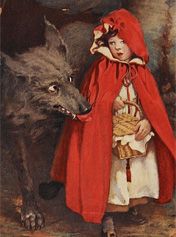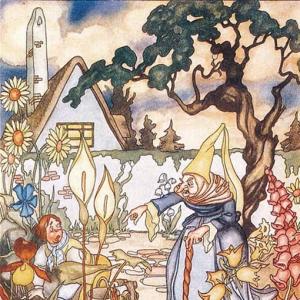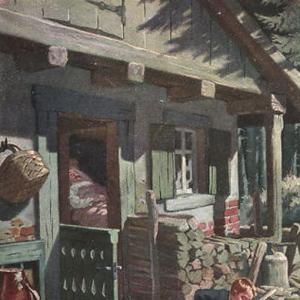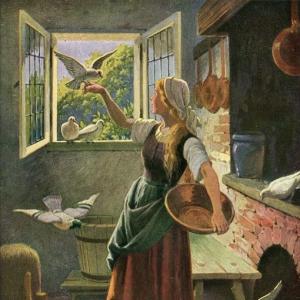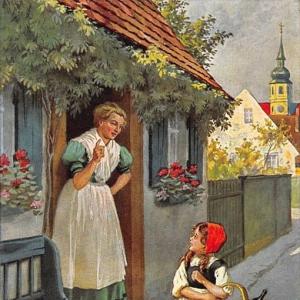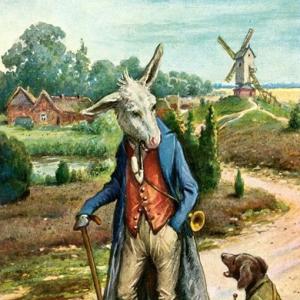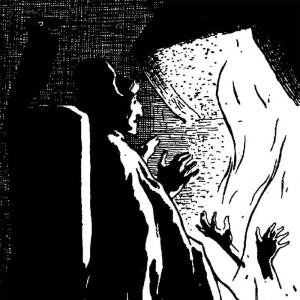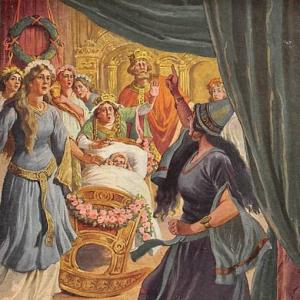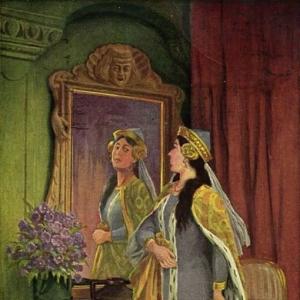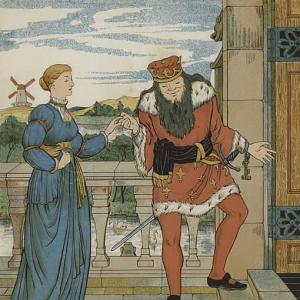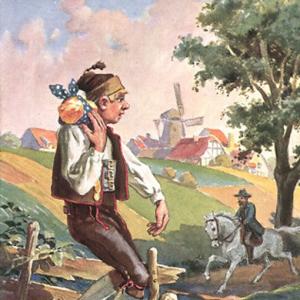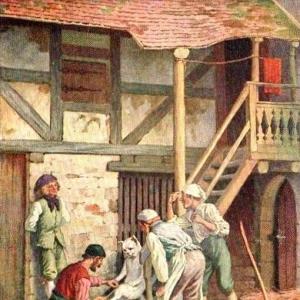Reading time: 9 min
It is wintertime, and the earth is covered with a layer of snow, as smooth as if it were marble cut from a mountain. The sky is high and clear, and the wind as sharp as an elfin-forged sword. The trees stand like white coral, or resemble blooming almond branches, and the air is as fresh as it is in the high Alps. The night is beautiful with streaming northern lights and countless twinkling stars.
Storms are coming. The clouds rise and scatter swan feathers. The snowflakes drift down, covering the hollow lane, the houses, the open fields, and the quiet streets. But we are sitting in a cozy room, before a glowing fire, and tales of olden days are being told. We hear a legend. „By the open sea there lay a viking’s grave, and on it at midnight sat the ghost of that buried hero. He had been a king, the golden crown encircling his brow. His hair fluttered in the wind, and he was clad in iron and steel.
He bowed his head sorrowfully and sighed in deep grief, like an unblessed spirit. „Then a ship came near. The men cast anchor and went on land. Among them was a scald, and he stepped forth toward the kingly form and asked, ‚Why do you grieve and suffer?“ Thereupon the dead man answered, „No man has sung of my deeds. They are dead and gone. Song has never carried them over the lands and into the hearts of men. Therefore I have no rest, no peace.“
„And he told of his work and his mighty deeds. The men of his time had known them, but not sung of them, for then there were no scalds. „Then the old scald plucked the strings of his harp and sang of the hero – of his daring as a youth, his strength in manhood, and his great and noble deeds. At that the dead one’s face brightened, like the edge of a cloud touched with moonlight. Happy and blessed, the form arose in beams of glory and vanished like a trail of the northern lights.
Only the green mound of turf with the stone devoid of runes remained to be seen; but over it, at the last sound of the chords, and as if it had come from the harp itself, there flew a tiny bird. It was a most beautiful songbird, with the tuneful melodies of the thrush, the throbbing melodies of the human heart, songs of home, as the bird of passage hears them. The bird flew over hill, over valley, and over forest and meadow. It was the Bird of Folklore, which never dies.“
We hear the song. We hear it now here in our room, in the winter evening, while the white bees swarm outside and the tempest tightens its strong grip. The Bird sings not only heroic songs. It sings soft, sweet love songs, rich and many. It sings of faithfulness in the North. It gives us fairy tales in melodies and words. It has proverbs and a language in song, and thereby, as if runes were laid on a dead man’s tongue, it can speak to us of ancient times, and thus we know the homeland of the Bird of Folklore.
In ancient heathen days, in the times of the vikings, its nest was in the harp of the bard. In the days of knighthood, when iron fists held the scales of justice, and only might was right, when the peasant and the dog were of equal value, where then did the Bird find shelter? Brutality and narrow-mindedness alike had no thought for it. But over the balcony of the castle, where the lady sat before her parchment and wrote down the old records in song and story.
In the humble green-turf hut, where the wandering peddler sat on the bench beside the good woman, telling her tales – there, above them, fluttered and flew, twittered and sang, the Bird that never dies so long as earth is green under the foot of man – the Bird of Folklore. Now it sings for us in here. Outside are the snowstorm and the night. The Bird lays runes on our tongue. We know again our homeland, as God speaks to us in our mother tongue in the melodies of the Bird of Folklore, and the old memories rise within us.
Faded colors are bright again. Song and tale give the joy of a blessed drink, lifting mind and soul until the evening seems like a Christmas festivity. The snow is drifting, and the ice is crackling. The storm reigns. It has great power. It is the lord, but not our Lord! It is wintertime, the wind still as sharp as an elfin-forged sword. The snow is drifting – it has been drifting, it seems to us, for days and weeks – and it lies like a monstrous snow mountain over the big town. It is like a weighty dream in the winter night.
All beneath it is hidden and seemingly nonexistent. Only the golden cross on the church, the symbol of faith, rises above the snow grave and glitters against the blue sky in the clear sunshine. And away over the snow-covered town fly the birds of heaven, the large and the small. They chirp and they sing, each in its own tongue. First is the flock of sparrows. They chirp about all the little things in street and lane, in nest and house. They know tales of the kitchen and the parlor.
„We know that buried town,“ they say. „Every living soul there has cheep, cheep, cheep!“ Then the black ravens and crows fly over the white snow. „Dig! Dig!“ they scream. „There’s still something to get down there, something for the belly – that’s the most important thing. That’s the opinion of most people down below there, and that opinion is caw, caw, caw!“ The wild swans come with whizzing wings and sing of the greatness and glory that still live in the thoughts and hearts of the men in the snow-covered slumber of the town.
It is not the sleep of death, for evidence of life comes forth. We hear it in tones of music. They swell and sound as if they are coming from the church organ, they are gripping as a strain from an elfin mound, as Ossianic songs, as the winged rush of the Valkyries. What harmony! It speaks to our inmost heart, uplifts our thoughts. We hear the Bird of Folklore! And now the warm breath of God breathes down from above. The snow mountain breaks open, and the sun shines in through it.
The spring is coming, and the birds are coming, a new generation, with the same familiar tones. Hearken to the drama of the year – the mighty snowstorm – the weighty dream of a winter night! All fetters shall be broken here, and everything shall rise again at the beautiful song of the Bird of Folklore – the Bird that never dies.
 Learn languages. Double-tap on a word.Learn languages in context with Childstories.org and Deepl.com.
Learn languages. Double-tap on a word.Learn languages in context with Childstories.org and Deepl.com.Backgrounds
Interpretations
Summary
Linguistics
„The Bird of Folklore“ is a lesser-known fairy tale by Hans Christian Andersen, a Danish author and poet best known for his iconic children’s stories. Andersen was born on April 2, 1805, in Odense, Denmark, and died on August 4, 1875, in Copenhagen, Denmark. Throughout his life, Andersen wrote numerous fairy tales, novels, poems, and plays. Some of his most famous works include „The Little Mermaid,“ „The Ugly Duckling,“ „The Emperor’s New Clothes,“ „The Snow Queen,“ and „Thumbelina.“
Andersen’s stories often contain moral lessons, allegories, and elements of folklore that resonate with readers across generations and cultures. His stories have been translated into more than 125 languages and have inspired countless adaptations, including films, stage productions, and ballets. „The Bird of Folklore“ reflects several of Andersen’s recurring themes, such as the power of storytelling, the value of preserving cultural heritage, and the resilience of life. The story also exemplifies Andersen’s ability to create rich, imaginative worlds and his skill in weaving together elements of folklore, fantasy, and human emotion.
„The Bird of Folklore“ can be interpreted in various ways, reflecting different themes and messages.
The power of storytelling: The tale emphasizes the importance of stories in preserving the memory of individuals and their deeds. The ghost king finds peace only when his story is sung by the scald, highlighting the role of storytelling in granting a sense of immortality. The Bird of Folklore represents the timeless nature of stories that are passed down through generations. As long as the earth is inhabited, the Bird of Folklore continues to sing, ensuring that ancient wisdom, traditions, and memories are preserved. Andersen’s stories often highlight the power of storytelling to connect people, share knowledge, and bridge cultural divides. The bird of folklore could symbolize the storyteller, who brings these tales to life and passes them on to future generations, ensuring their continued relevance and impact.
The transformative effect of art: The scald’s song not only grants the ghost king peace but also creates the Bird of Folklore. This illustrates the power of art, in this case, music and storytelling, to transform and bring beauty into the world. By listening to the songs of the Bird of Folklore, people remember their homeland and their ancestors. The tale reminds readers that it is crucial to acknowledge and appreciate the past to understand the present and build a better future.
Universal nature of human experience: The Bird of Folklore sings songs that resonate with people’s experiences and emotions, such as love, faithfulness, and heroism. These shared human experiences connect individuals across different cultures and times, illustrating the universality of certain aspects of human nature. The tale describes a snow-covered town where various birds sing about different aspects of life. The arrival of spring and the new generation of birds signifies the resilience of life and the return of hope after a difficult period, such as the harsh winter.
Importance of folklore and tradition: Andersen’s stories often emphasize the importance of traditional stories, legends, and myths in shaping a culture’s identity. The magical bird in the title could symbolize the power of folklore to inspire, entertain, and teach moral lessons. It may also reflect the notion that these stories have a life of their own, taking flight and capturing the imagination of generations of listeners. Many of Andersen’s tales involve characters undergoing a transformation or a journey of self-discovery. The bird of folklore could represent the transformative power of stories, helping individuals grow and change by providing them with a new perspective or understanding of themselves and the world around them.
„The Bird of Folklore“ is a fairy tale by Hans Christian Andersen that takes place during wintertime, with the earth covered in snow and the sky filled with the beauty of northern lights and twinkling stars. The story is set in a cozy room where tales of olden days are being told. The legend in the story tells of a ghost that sits on a Viking’s grave by the open sea. The ghost, a king adorned with a golden crown and clad in iron and steel, grieves sorrowfully. A ship arrives, and among the crew is a scald, who asks the king why he suffers.
The king replies that no one has sung of his deeds, and as a result, he has no rest or peace. The scald listens to the king’s tales of his achievements and then sings a song praising the king’s youth, strength, and noble deeds. As he does so, the king’s face brightens and he vanishes in beams of glory. A tiny, beautiful songbird emerges from the scene, flying over hills, valleys, forests, and meadows. This bird is the Bird of Folklore, which never dies. The Bird of Folklore sings various songs, including love songs, songs of faithfulness, and fairy tales in melodies and words.
The bird’s presence invokes memories of ancient times and makes faded colors bright again, lifting minds and souls. The story continues with a description of the snow-covered town where the birds of heaven fly and sing. Sparrows speak of the buried town, while ravens and crows focus on the need to dig for sustenance. Wild swans sing of the greatness and glory that remains in the hearts of the people. The tale concludes with the arrival of spring and a new generation of birds. The enchanting songs of the Bird of Folklore continue, symbolizing the enduring power of stories and the resilience of life.
Hans Christian Andersen’s „The Bird of Folklore“ is a rich text that offers multiple layers of linguistic and thematic elements typical of fairy tales and folklore.
Here is a linguistic analysis of this tale:
Imagery and Symbolism
Winter Imagery: Andersen employs vivid winter imagery, describing snow as „as smooth as if it were marble“ and the wind „as sharp as an elfin-forged sword. “ This use of simile not only paints a vivid picture but also imbues the landscape with a mystical, otherworldly quality by referencing elves.
The Bird of Folklore: The bird symbolizes the enduring power of folklore and storytelling across time and cultures. It carries the „tuneful melodies of the thrush“ and the „throbbing melodies of the human heart,“ representing the emotional and cultural continuity provided by stories.
Light and Darkness: The imagery of light, such as the „northern lights“ and „moonlight,“ often contrasts with the „night“ and „snow grave,“ symbolizing the struggle between knowledge, memory, and oblivion. The golden cross rising „against the blue sky in the clear sunshine“ suggests hope and continuity of faith amidst the bleak landscape.
Narrative Structure
Framing Device: The narrative is framed within a cozy room during winter, where stories of „olden days“ are recounted. This framing reinforces the tradition of oral storytelling as a communal, comforting activity during harsh conditions.
Legend Insertion: The legend of the viking king and the scald forms a story within the story. This nested structure is a common feature in folklore, inviting reflection on cultural values such as heroism and the necessity of remembrance and song.
Themes
The Power of Song and Memory: Central to the tale is the idea that deeds not sung or remembered are lost. The inability of the viking king to find peace until his stories are told highlights fairy tale concerns with legacy and memory.
Continuity of Tradition: The Bird of Folklore is a powerful allegory for the persistence of cultural memory. It is said to have nested in bardic harps and traveled in songs, representing the resilience and adaptability of cultural narratives across different eras.
Nature vs. Human Resilience: The relentless winter storm symbolizes natural forces, whereas the warmth of the room and the light of the cross stand for human resilience and faith. The eventual spring signifies renewal and the cycles of life and tradition.
Language and Style
Personification: Andersen often personifies nature—such as the snow and storm—imbuing it with attributes and motivations similar to those of human beings. This technique helps animate the environment and embed it with thematic significance.
Dialogic Elements: The tale includes dialogue between the scald and the ghostly king, an element that highlights interpersonal exchange of knowledge and the importance of understanding between generations.
Lexical Choices: Words like „scald,“ „tales of olden days,“ and „faithfulness in the North“ are carefully chosen to evoke a sense of antiquity and the cultural richness of Scandinavian folklore.
In conclusion, „The Bird of Folklore“ is not only a rich narrative in terms of its imagery and themes but also a masterful example of Andersen’s use of linguistic elements to convey the enduring power of storytelling across generations and cultures. It reminds readers of the importance of memory, tradition, and the human spirit’s resilience against the forces of nature and forgetfulness.
Information for scientific analysis
Fairy tale statistics | Value |
|---|---|
| Translations | DE, EN, DA, ES |
| Readability Index by Björnsson | 26.2 |
| Flesch-Reading-Ease Index | 86 |
| Flesch–Kincaid Grade-Level | 4.9 |
| Gunning Fog Index | 7.2 |
| Coleman–Liau Index | 8.3 |
| SMOG Index | 7.5 |
| Automated Readability Index | 5.1 |
| Character Count | 6.242 |
| Letter Count | 4.811 |
| Sentence Count | 81 |
| Word Count | 1.174 |
| Average Words per Sentence | 14,49 |
| Words with more than 6 letters | 137 |
| Percentage of long words | 11.7% |
| Number of Syllables | 1.472 |
| Average Syllables per Word | 1,25 |
| Words with three Syllables | 44 |
| Percentage Words with three Syllables | 3.7% |
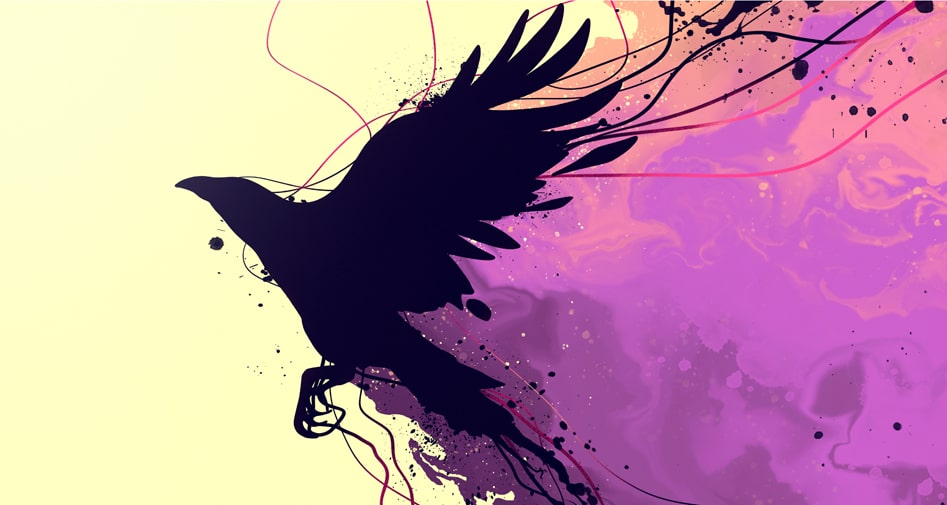
 Facebook
Facebook  Whatsapp
Whatsapp  Messenger
Messenger  Telegram
Telegram Reddit
Reddit